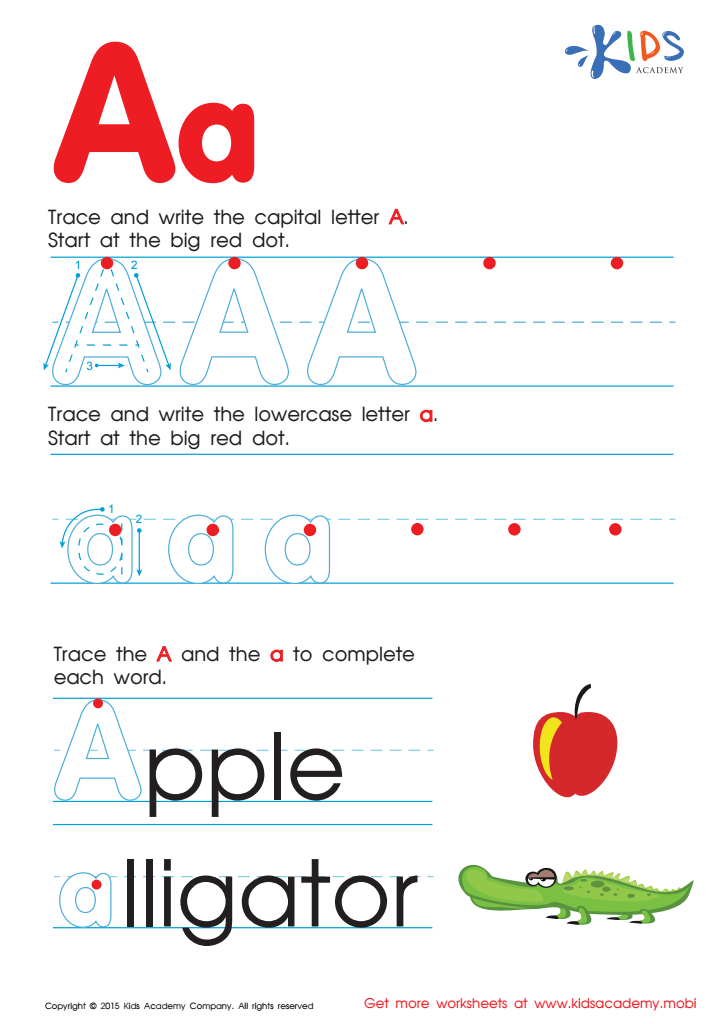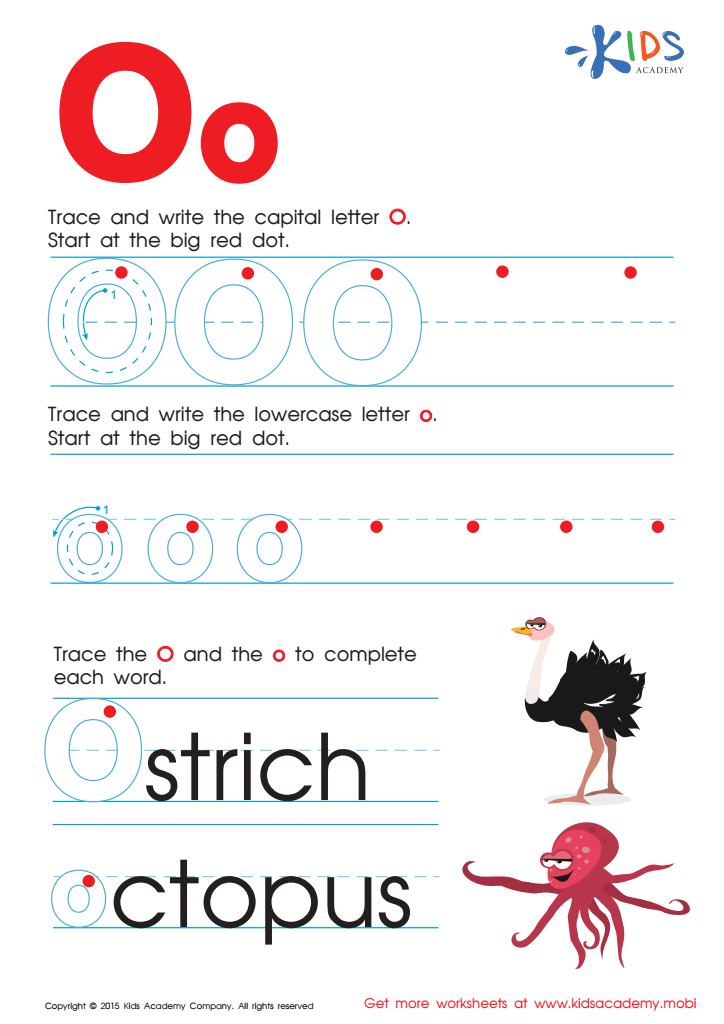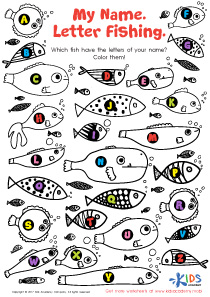Hand-eye Coordination ABC Order Worksheets for Ages 3-9
5 filtered results
-
From - To
Enhance your child's hand-eye coordination and alphabet skills with our engaging "Hand-eye Coordination ABC Order Worksheets" designed for ages 3-9. These printable worksheets not only introduce young learners to the alphabet but also promote fine motor skills as they trace and organize letters in alphabetical order. Bursting with colorful illustrations and interactive activities, these worksheets keep children entertained while fostering important cognitive abilities. Perfect for at-home learning or classroom environments, our resource supports early literacy and coordination development in a fun, effective way. Unlock your child's potential with our thoughtfully crafted worksheets today!


Letter A Tracing Page


Letter O Tracing Page


Letter P Tracing Page


Letter H Tracing Page


Letter D Tracing Page
Hand-eye coordination is a crucial developmental skill for children aged 3-9 that significantly impacts their overall learning and daily functioning. This coordination is essential in various activities, from writing and drawing to sports and everyday tasks. When parents and teachers focus on improving hand-eye coordination, they help enhance children's fine motor skills, which are foundational for academic success—particularly in literacy and numeracy.
Furthermore, engaging children in structured activities that promote hand-eye coordination, such as puzzles, crafting, and cursive writing practice, encourages critical thinking and problem-solving. By promoting this skill, educators and caregivers facilitate the development of confidence and independence, empowering children to tackle new challenges.
The ABC Order aspect lends an additional layer of cognitive development, as organizing and recognizing letters help build foundational literacy skills. This technique can make learning more interactive and fun, drawing children’s interest and enhancing retention.
Ultimately, fostering hand-eye coordination and a sense of order in children not only prepares them for academic tasks but also equips them with life skills that carry into adulthood, contributing to their overall success and self-esteem. By understanding the importance of this skill, parents and teachers can better support children's growth and development.
 Assign to My Students
Assign to My Students
















